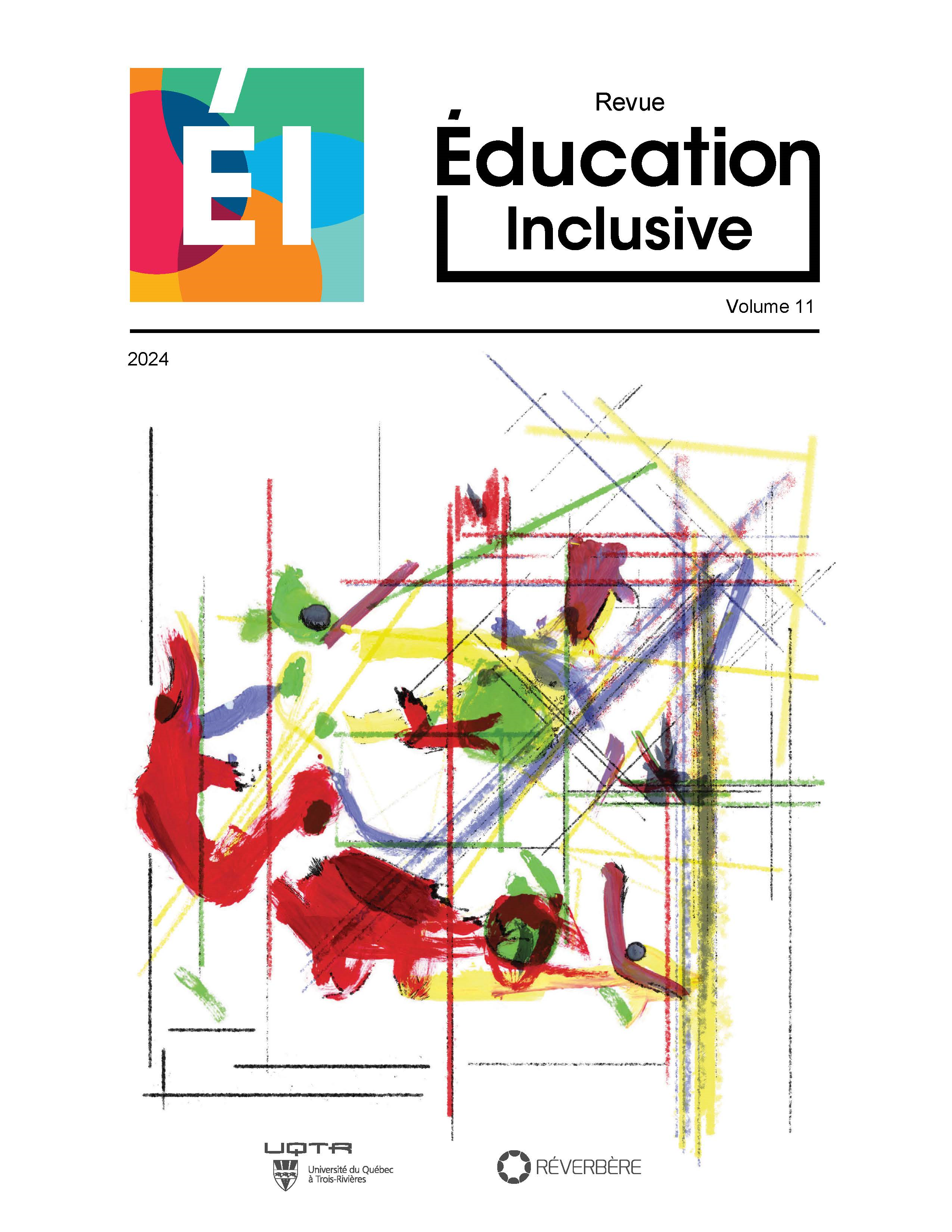Une classe inclusive au primaire : un cas d’école
Résumé
RésuméDans le cadre d’une recherche-action financée par le Conseil de recherches en sciences humaines (CRSH) portant sur la mise en oeuvre d’un coenseignement intensif en 2e année primaire au Québec, quelques élèves handicapés ou en difficulté d’adaptation ou d’apprentissage (EHDAA) ont été regroupés à temps plein au sein d’une même classe ordinaire avec d’autres élèves sans difficulté particulière durant une année scolaire. Ainsi, une prise en compte de la diversité s’est effectuée en « coulisses » pour la composition de la classe et l’attribution des ressources pour organiser le coenseignement qui, sur « scène », visait à offrir un enseignement commun sur les finalités et objectifs, mais différencié dans un contexte le plus inclusif possible. Cette étude de cas (Yin, 2009) analyse, sur la base des neuf conditions du coenseignement (Tremblay, 2023a, 2023b), la manière dont s’est opérationnalisé le dispositif de coenseignement dans cette école.
AbstractAs part of an action research funded by the Social Sciences and Humanities Research Council (SSHRC) on the implementation of intensive co-teaching in the 2nd year of elementary school in Quebec, some disabled students and students with behavioral disabilities and learning difficulties were grouped together full-time in the same ordinary class with other students without any particular difficulty during a school year. Thus, diversity was taken into account “behind the scenes” for the composition of the class and the allocation of resources to organize co-teaching which, on “stage”, aimed to offer common teaching on the aims and objectives, but differentiated in the most inclusive context possible. This case study (Yin, 2009) analyzes, on the basis of the nine conditions of co-teaching (Tremblay, 2023a, b), the way in which the co-teaching system was operationalized in this school.


